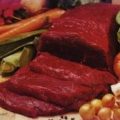 Aromatic substancesUntil recently, the processformation of carbon dioxide bubbles in just raised many questions among chemists and physicists. But a group of researchers from France and Germany studied the mechanisms of chemical processes that lead to the formation and enhancement of aromas of newly opened sparkling drinks. As a result, it turned out that aerosols of drink droplets formed above the surface of wine poured into a glass contain many times higher concentrations of various aromatic substances, which lead to the formation of the smell. That is, it's all about chemical reactions "on the surface". And the excess concentration occurs due to the characteristic chemical properties of the molecules of aromatic compounds. So, when a new bubble is formed in the volume of champagne, which from a scientific point of view is a multicomponent aqueous-alcoholic solution of chemicals supersaturated with carbon dioxide molecules dissolved in it, the molecules of aromatic compounds are concentrated at the liquid-gas interface. As the bubble grows in volume and rises to the surface, the number of aromatic molecules on its "walls" increases. increases significantly, so that by the time it bursts and forms a few aerosol drops above the surface of the champagne, the liquid of these drops is already heavily oversaturated with aromatic compounds that determine the aroma of sparkling wines. "Thanks to this delicate process, a glass contains both a lot of "food for the mind" and pleasure for the senses," said study leader Liger-Belard in 2013. By the way:
Aromatic substancesUntil recently, the processformation of carbon dioxide bubbles in just raised many questions among chemists and physicists. But a group of researchers from France and Germany studied the mechanisms of chemical processes that lead to the formation and enhancement of aromas of newly opened sparkling drinks. As a result, it turned out that aerosols of drink droplets formed above the surface of wine poured into a glass contain many times higher concentrations of various aromatic substances, which lead to the formation of the smell. That is, it's all about chemical reactions "on the surface". And the excess concentration occurs due to the characteristic chemical properties of the molecules of aromatic compounds. So, when a new bubble is formed in the volume of champagne, which from a scientific point of view is a multicomponent aqueous-alcoholic solution of chemicals supersaturated with carbon dioxide molecules dissolved in it, the molecules of aromatic compounds are concentrated at the liquid-gas interface. As the bubble grows in volume and rises to the surface, the number of aromatic molecules on its "walls" increases. increases significantly, so that by the time it bursts and forms a few aerosol drops above the surface of the champagne, the liquid of these drops is already heavily oversaturated with aromatic compounds that determine the aroma of sparkling wines. "Thanks to this delicate process, a glass contains both a lot of "food for the mind" and pleasure for the senses," said study leader Liger-Belard in 2013. By the way:
- Scarlett Johansson is the face of champagne
- Sparkling Wine Review
- How to open champagne
Source: Proceedings of the National Academy of Sciences









